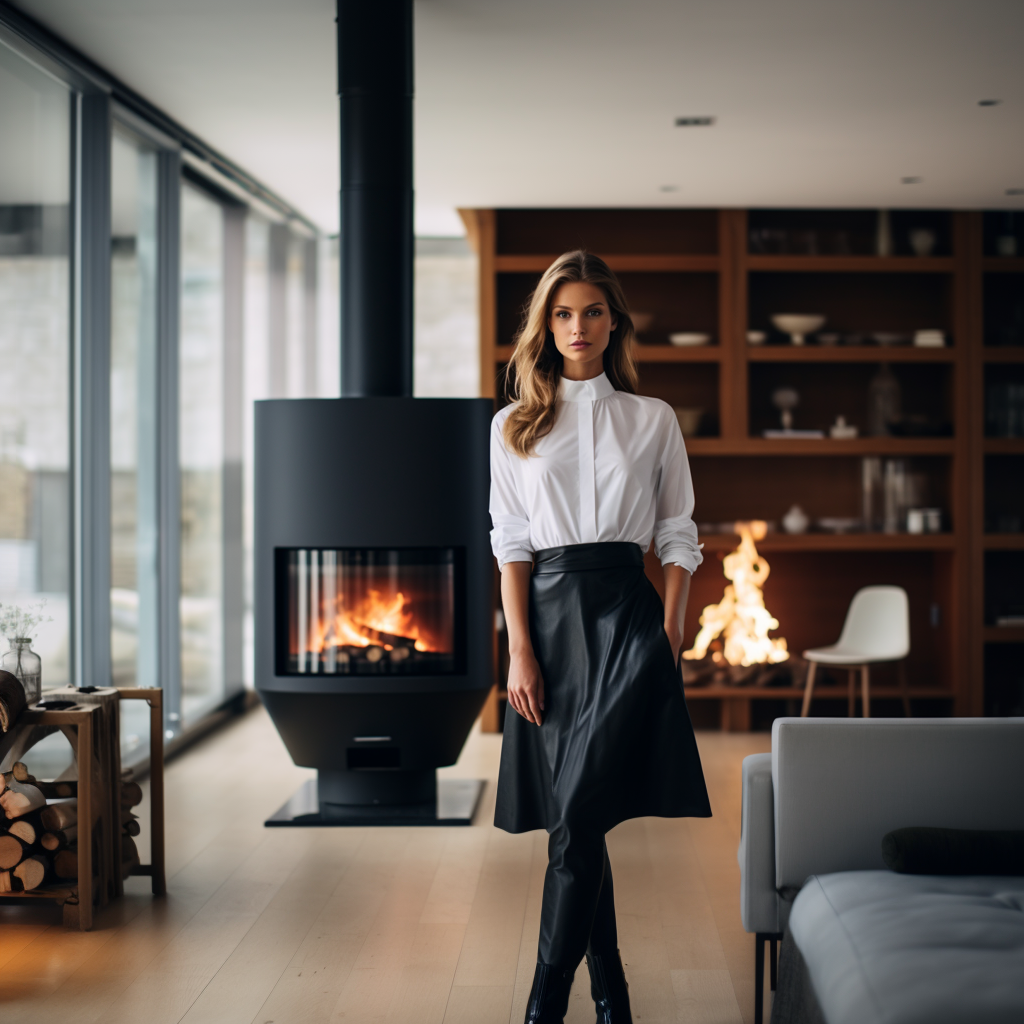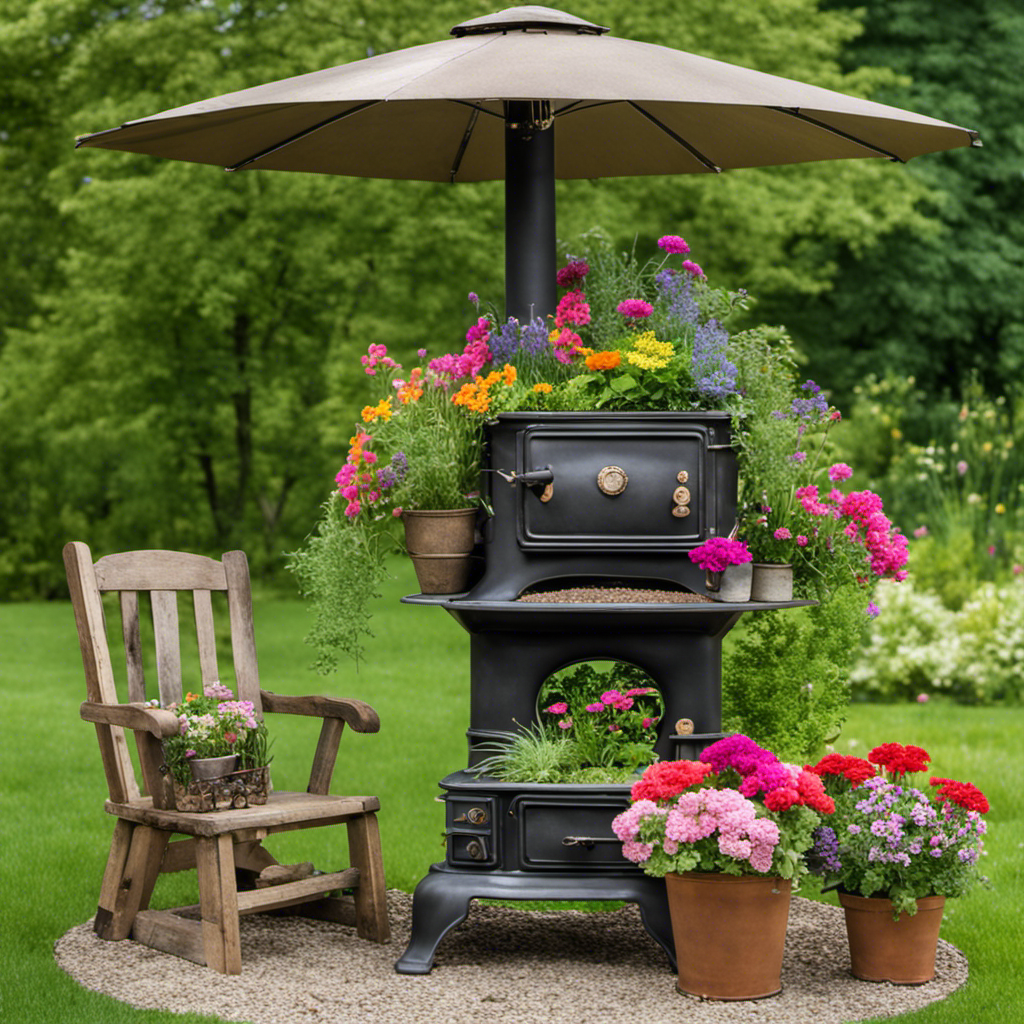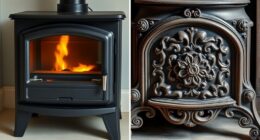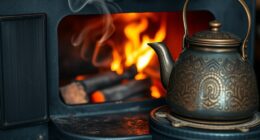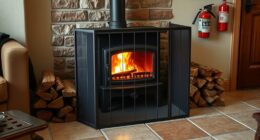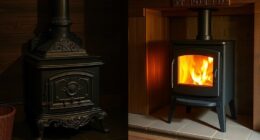
As a fan of wood stoves, I sometimes wonder why my favorite stove back-puffs smoke from time to time. It can be frustrating and worrying, but don’t worry! In this article, I will explore the usual reasons for this problem and offer expert advice on how to avoid it.
So, if you’ve ever found yourself scratching your head over this phenomenon, sit back, relax, and let’s unravel the mystery together.
Key Takeaways
- Inadequate draft caused by a dirty or blocked chimney
- Insufficient air supply to the stove
- Improper fuel combustion due to wet or unseasoned wood
- Malfunctioning damper
Common Causes of Back Puffing in Wood Stoves
I’ve noticed that during windy days, my wood stove occasionally back puffs smoke, which is a common issue for many wood stove owners.
Understanding the causes of back puffing is essential for smoke back puffing prevention and troubleshooting back puffing issues.

One common cause is inadequate draft, which occurs when the chimney fails to create enough suction to draw the smoke up and out of the stove. This can be caused by a variety of factors, such as a dirty or blocked chimney, a poorly designed chimney system, or insufficient air supply to the stove.
Another cause is improper fuel combustion, which can result from using wet or unseasoned wood, a lack of sufficient air flow, or a malfunctioning damper.
How Poor Drafting Can Lead to Smoke Back Puffing
Although poor drafting is often overlooked, it can lead to smoke back puffing in wood stoves. Understanding chimney airflow is crucial in troubleshooting back puffing issues. Here are some key points to consider:
-
Blocked Chimney: A blocked chimney restricts the flow of air, causing smoke to back up into the wood stove. This can be caused by debris, bird nests, or excessive creosote buildup. Regular chimney maintenance is essential to prevent blockages.
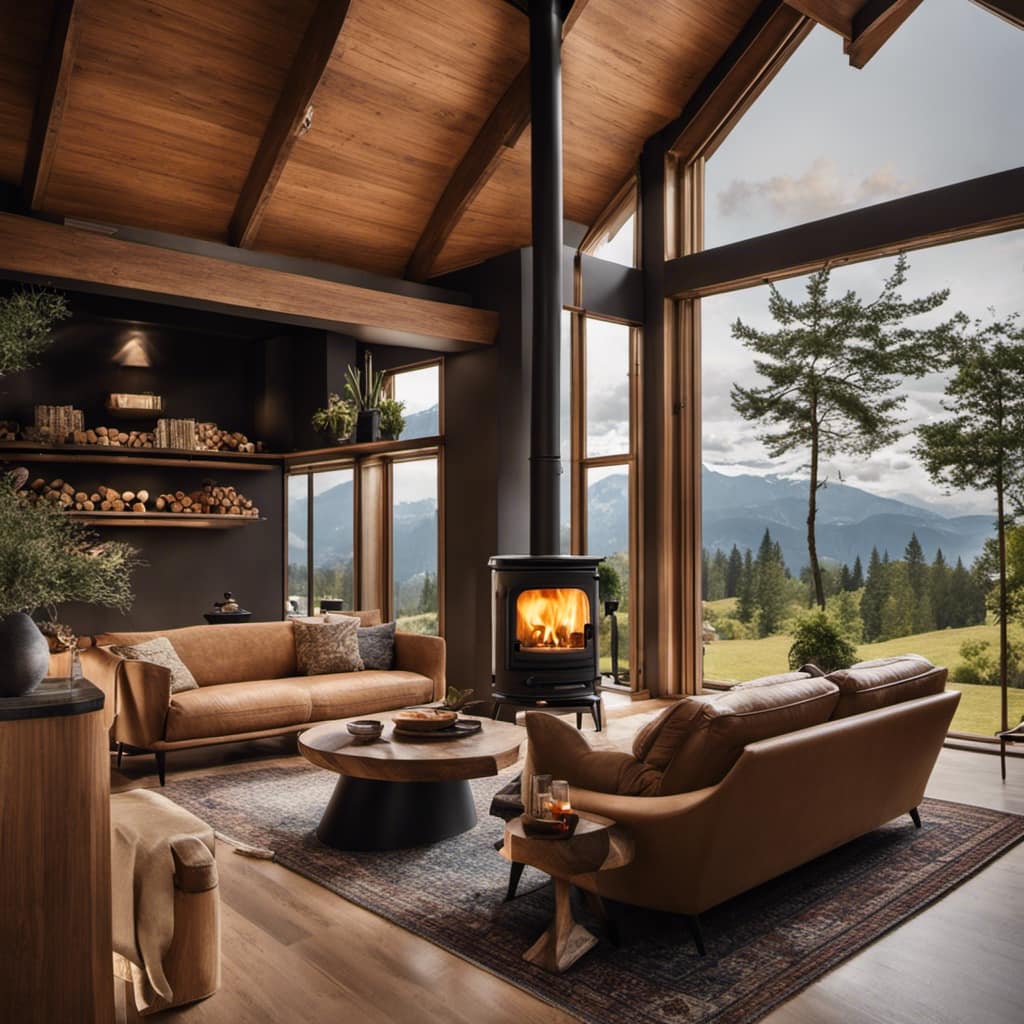
-
Inadequate Air Supply: Insufficient air supply to the wood stove can result in poor combustion, leading to back puffing. Make sure the air vents are open and allow for proper oxygen intake.
-
Improper Damper Position: The damper regulates the airflow in the chimney. If it’s closed or not positioned correctly, it can disrupt the airflow and cause smoke to back puff. Ensure the damper is fully open during operation.
Understanding the Impact of Wind on Wood Stove Performance
During windy days, the gusts can significantly affect how well a wood stove performs. Understanding the impact of wind on wood stove performance is crucial for troubleshooting techniques.
Wind patterns play a significant role in determining how effectively a wood stove burns and how well it drafts. Strong gusts of wind can disrupt the airflow around the stove, causing smoke to back puff into the room.
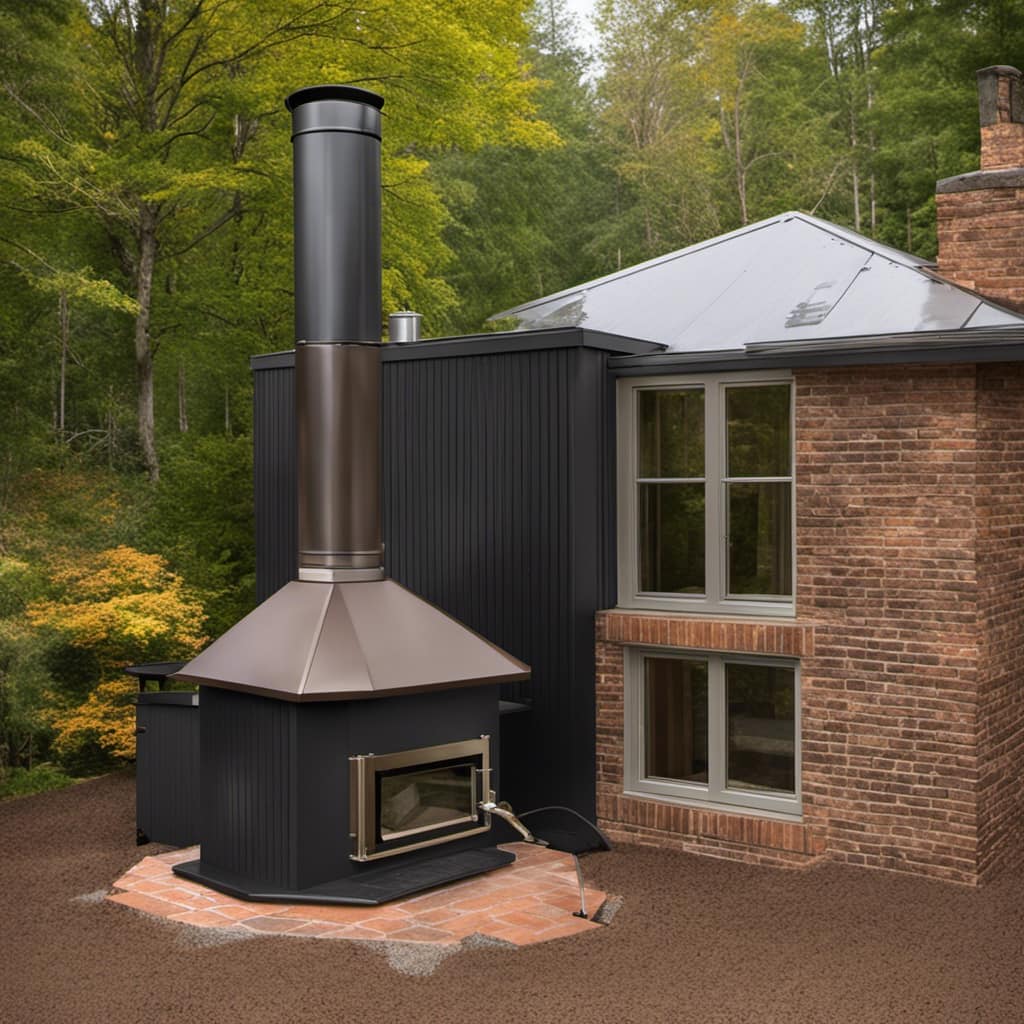
To mitigate this issue, it’s essential to consider the positioning of the stove and the direction of the prevailing winds. Installing wind deflectors or chimney caps can also help redirect the wind and improve the stove’s performance.
Additionally, ensuring proper ventilation and employing draft controls can aid in managing the effects of wind on wood stove performance. By following these troubleshooting techniques, one can minimize the impact of wind on the stove’s efficiency and prevent smoke back puffing.
The Role of Chimney Design in Back Puffing Issues
One possible sentence that meets the given criteria is: ‘To address back puffing issues, it’s important to consider both the height and diameter of the chimney, as well as the direction of prevailing winds.’
When it comes to chimney design and its role in preventing smoke back puffing in wood stoves, there are several key factors to consider.

-
Chimney height: The height of the chimney plays a crucial role in creating an adequate draft for proper air flow. A taller chimney can help create a stronger draft, allowing for better combustion and reduced chances of back puffing.
-
Air supply: Sufficient air supply is essential for efficient wood burning and preventing back puffing. Proper ventilation and the use of air vents or dampers can help control the rate of combustion, ensuring a steady flow of fresh air to the fire.
-
Wind direction: Understanding the direction of prevailing winds is crucial in chimney design. Placing the chimney in a location where it’s sheltered from strong gusts can help prevent wind-induced back puffing.
Considering these factors in chimney design can greatly reduce the occurrence of smoke back puffing. However, there are also other effective solutions to prevent smoke back puffing in wood stoves that can be implemented.
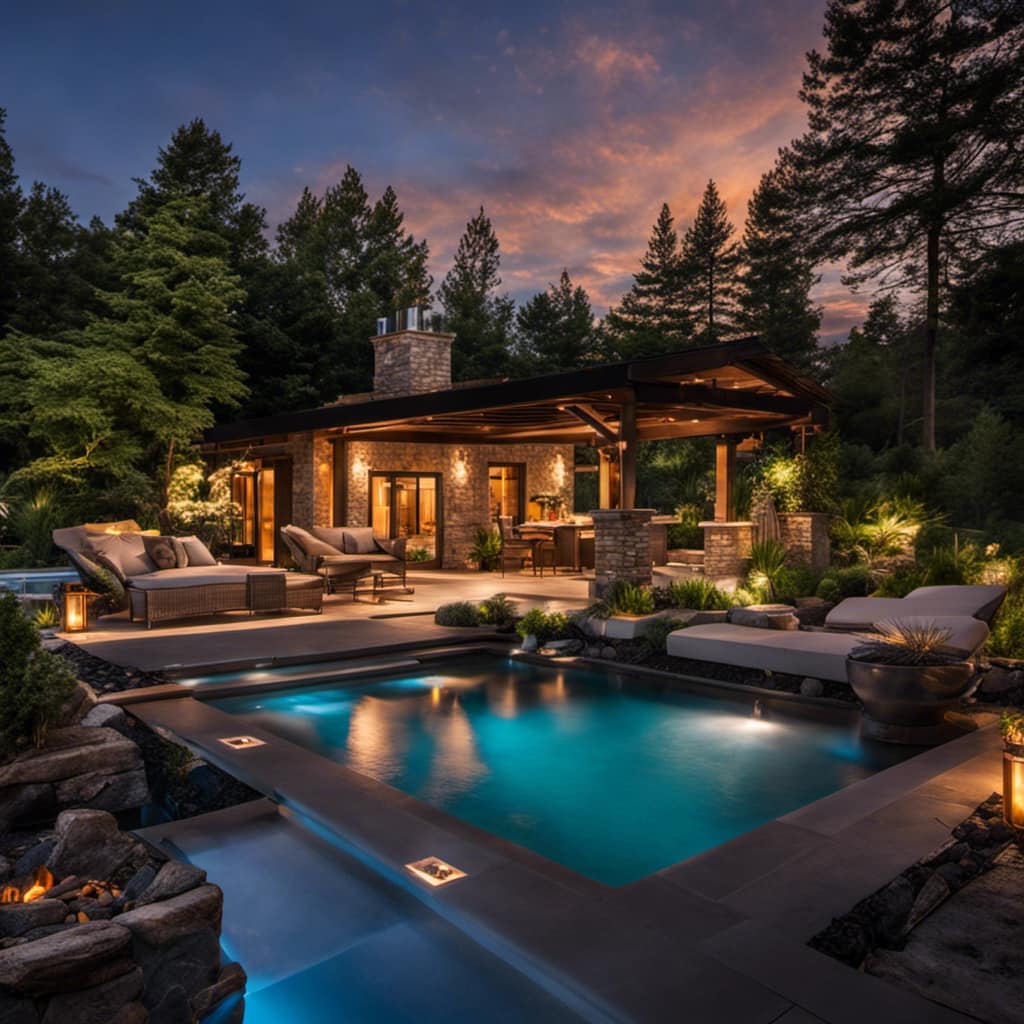
Effective Solutions to Prevent Smoke Back Puffing in Wood Stoves
Proper ventilation and regular maintenance are key factors in preventing smoke back puffing in wood stoves. One practical solution is to ensure that the wood stove is installed with a proper chimney system that allows for efficient airflow. This includes having the correct chimney height and diameter, as well as ensuring that the chimney is clear of any blockages or obstructions.
Additionally, regular maintenance of the wood stove is crucial in preventing smoke back puffing. This includes cleaning the chimney and flue regularly to remove any creosote buildup or debris that can hinder proper ventilation.
Implementing these solutions can significantly reduce the occurrence of smoke back puffing in wood stoves, providing a safer and more efficient heating experience.
Frequently Asked Questions
How Can I Tell if My Wood Stove Is Experiencing Back Puffing Issues?
If your wood stove is experiencing back puffing issues, there are several signs to look out for. These include excessive smoke, difficulty lighting the fire, and a strong smell of smoke in the room. Troubleshooting wood stove drafting can help resolve these problems.

Are There Any Safety Concerns Associated With Wood Stove Back Puffing?
There are potential health hazards associated with wood stove back puffing. To prevent and address this issue, ensure proper ventilation, clean the chimney regularly, and use dry, seasoned wood.
Can Back Puffing in a Wood Stove Cause Damage to the Chimney or Flue?
Back puffing in a wood stove can potentially cause damage to the chimney or flue. It is important to properly maintain the wood stove and troubleshoot any issues related to back puffing to prevent this damage.
Are There Any Specific Weather Conditions That Can Increase the Likelihood of Back Puffing?
Weather conditions can increase the likelihood of back puffing in wood stoves. To prevent this, ensure proper ventilation, use dry wood, and avoid restricted airflow. Understanding these factors can help maintain a safe and efficient wood stove.
What Are Some Signs That Indicate Poor Drafting in a Wood Stove?
Poor drafting in a wood stove can be indicated by signs such as smoke back puffing, difficulty in lighting the fire, and a lack of proper heat output. Causes can include a blocked chimney or insufficient air supply. Prevention involves regular chimney cleaning and ensuring proper ventilation.

Conclusion
In conclusion, when it comes to occasional smoke back puffing in wood stoves, poor drafting, wind conditions, and chimney design all play a significant role.
Understanding these factors is crucial in finding effective solutions to prevent this issue.
Just as a well-tuned instrument produces harmonious melodies, a properly functioning wood stove creates a cozy and smoke-free environment.
So, by addressing these causes and implementing the right solutions, you can ensure a more enjoyable and efficient wood stove experience.

Growing up surrounded by the vast beauty of nature, Sierra was always drawn to the call of the wild. While others sought the comfort of the familiar, she ventured out, embracing the unpredictable and finding stories in the heartbeat of nature.
At the epicenter of every remarkable venture lies a dynamic team—a fusion of diverse talents, visions, and passions. The essence of Best Small Wood Stoves is crafted and refined by such a trio: Sierra, Logan, and Terra. Their collective expertise has transformed the platform into a leading authority on small wood stoves, radiating warmth and knowledge in equal measure.



